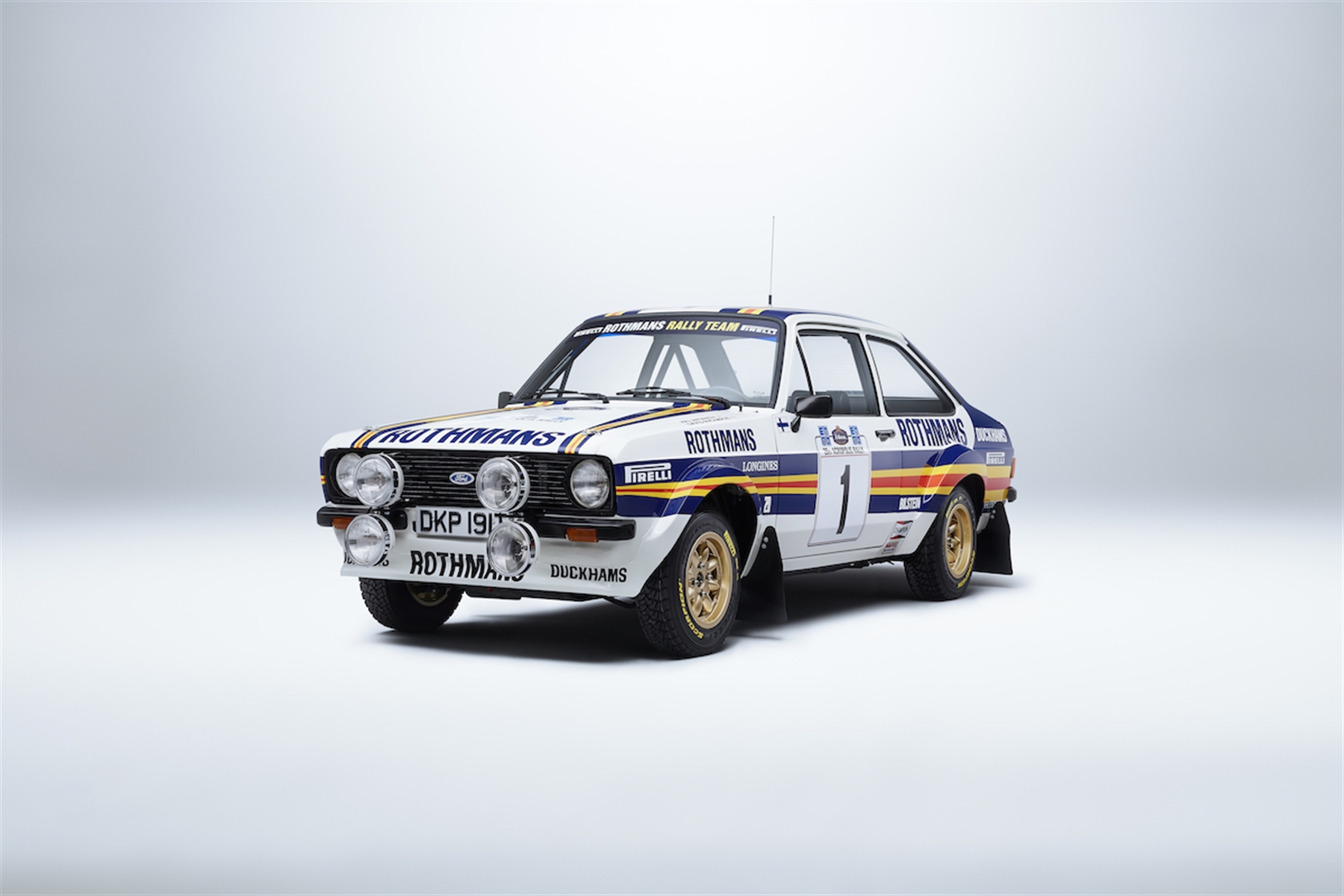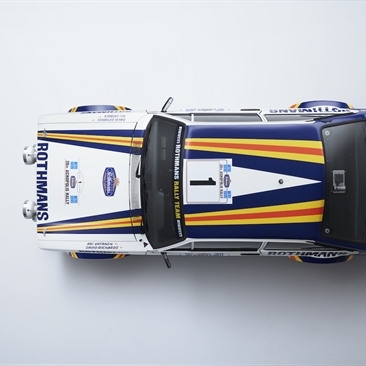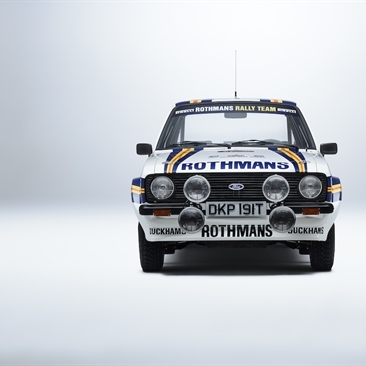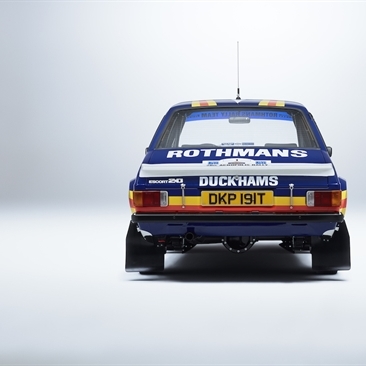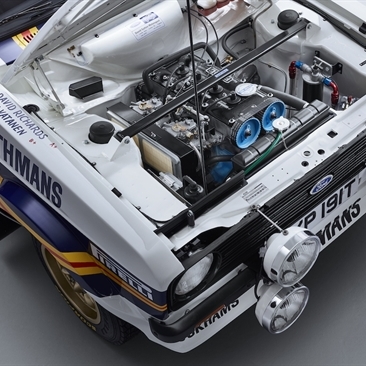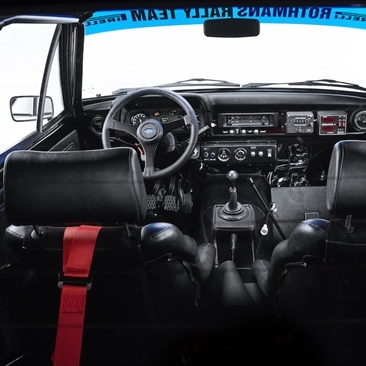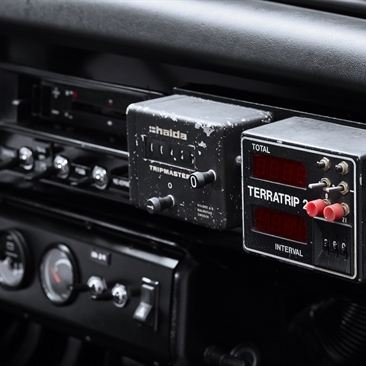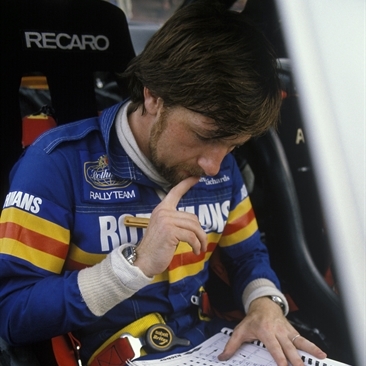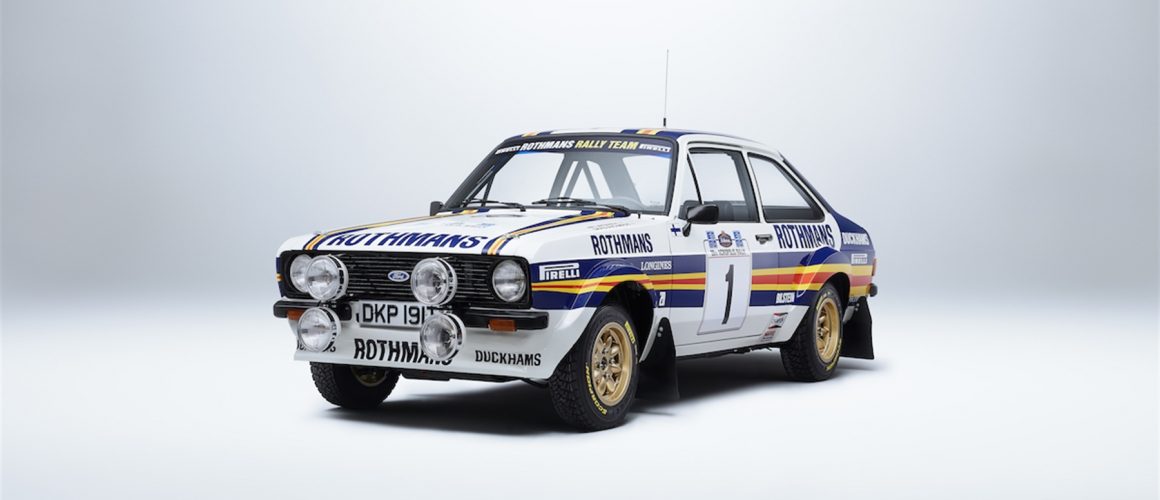Words: David Lillywhite | Photography: Prodrive/Junction 11
It’s 1981 and there’s a World Rally Championship battle going on between the front-engine-rear-drive traditionalists, wild mid-engined specials and Audi’s still-developing four-wheel-drive newcomer. In the old-school camp the Escort RS1800 looks strong against the Opel Ascona 400, Fiat 131 Abarth and Sunbeam Lotus – but surely even Ford’s well proven weapon won’t be a match for the Renault 5 Turbo or Lancia Stratos, let alone the Quattro?
Oh yes it will! And although Ford (which had launched the front-wheel-drive Mk3 Escort the year before) had stopped supporting the Escort RS1800 entries, the Rothmans-liveried example of Ari Vatanen and David Richards takes the championship, having won three rallies outright and been on the podium for two more. It’s a spectacular achievement.
In the following years, despite a terrible accident on the 1985 Rally Argentina, Ari Vatanen goes on to win the Paris-Dakar (four times!) and Pikes Peak, before becoming a European member of parliament. David Richards shelves his pace notes and forms Prodrive, later becoming chairman of Aston Martin for six years. Rear-wheel-drive Escorts remain the clubman tools of choice, despite the four-wheel-drive onslaught in the World Rally Championship.
And the winning Escort? Well, in fact, there were four of those for the 1981 season. One was destroyed, one was pushed off the line of the final rally to be preserved in its original state at the UK’s National Motor Museum, Beaulieu, and the other two continued rallying. One of those is the car you’re looking at; DKP 191T, the most successful of the four, having won the Acropolis and the 1000 Lakes, along with a seventh place in the Sanremo rally.
It had been built by Rothmans team mechanic John O’Connor at David Sutton Motorsport, which had taken over the preparation of WRC Escorts when Ford’s Motorsport division at Boreham pulled out.
While we’re tying up loose ends, it’s interesting to note that David Sutton later moved onto running Audi Quattros in the WRC. Much later on, O’Connor went to work with Phil Mills, the 2003 championship-winning co-driver with Petter Solberg in the Prodrive-run Subaru Imprezas – but now a Ford Escort rally-preparation specialist.
So… let’s take a deep breath here as we slide sideways into the 2010s, when the collectability of old Subaru rally cars is on the up, and Prodrive opens a restoration department. Boss David Richards, already a big classic car fan, eyes up the newly shiny examples of his early Prodrive days, and starts to hanker for his old 1981 championship-winning Escort. You can see where this is going now, can’t you?
So David mentions the Escort to Phil Mills, who happens to know the locations of the two ex-Vatanen/Richards cars still in action. But neither owner is interested in selling. Until…
“It [DKP 191T] was in private hands,” says Phil, “and had done the Roger Albert Clark Rally, Goodwood, all those. I asked the owner many, many years ago if he would sell. He said: ‘No, I never will.’ And then I had a phone call out of the blue one day: ‘Are you still interested in the car? I might sell if we can come to an arrangement.’ I phoned David straight away, and he said: ‘Yes, I’ve got to have it!’ It was as simple as that.”
Let’s fast-forward the story to late 2020, at the ever-expanding Prodrive HQ in Banbury, Oxfordshire. The 25th anniversary of Colin McRae’s era-defining championship win has only recently passed, and the Escort is nestled between a McRae car and a newly restored Solberg/Mills 2004 Impreza. In the background, Prodrive’s all-new Dakar Rally cars are being readied for shipping the following day. The Escort looks small but stunning in this sea of hi-tech.
Despite all that’s going on, David is completely focussed on the Ford: “I’ve got great, great, great affection for this RS1800 because it served us so very well,” he says enthusiastically. “The factory team had stopped in 1979, and David Sutton took over in 1980. I negotiated and took the funding from Rothmans to sponsor the team. And that’s how we managed to keep going.
“The car was built in a bit of a hurry by John O’Connor. He wasn’t allowed any more than a month to build it, because we were in such a rush to get it in time for the Acropolis Rally.
“Acropolis was one of our favourite events. We won the rally, quite comfortably on this occasion [the previous year they won despite several punctures]. It was probably the last time when two-wheel-drive cars were capable of winning; the Audis were about to take over. And then we went to Finland [1000 Lakes] with this very same car; home territory for Ari. We had finished second twice there, always to Markku Alén. We sat down and analysed exactly where we lost the event, and decided that we’d lost in the first four or five stages – Markku got away from us there.
“So [in 1981] we said let’s go for it on the first four or five stages this time, we’ll go flat-out and see if we can reverse the roles on Markku. And by I think the fifth or sixth stage Markku rolled, and we got the upper hand and went on to win the event. For Ari, the 1000 Lakes was the event to win. Quite frankly, it is frighteningly fast; I can’t even describe the speed over those roads. It is just mind boggling what you can do on a gravel road in one of those old cars.
“The same car was then rebuilt in Tarmac spec for the Sanremo rally, which in those days started off with a long drive from Sanremo down to Pisa, and then into gravel stages around Tuscany. And then the rally came back up to Sanremo, and did the asphalt roads behind Sanremo. Our biggest competitor at this point was Michèle Mouton, who was leading the rally when we came back into Sanremo.
“The championship was in my eyes, but Ari just wanted to win the event. There were two loops at the stage that night around the back of Sanremo, and we agreed that for the first loop we would push hard, see where we were after the end of that loop and, if we were still in touch, we might have a go [at winning the event]. So we set off like a scalded cat. And there was one little wall sticking out, and Ari must have been 5cm wrong with the car. We clipped the wall and broke a track-control arm. We limped out of the stage having lost a couple of minutes, and eventually finished seventh.
“What actually sticks in my mind is the prizegiving at the harbour. Everyone went up for their prizes; we went up for seventh overall, and by seventh all the spectators have usually gone, but there was a little old man cheering and clapping us. We went to speak to him; in broken English he explained that he thought we were real sportsmen because we could have cruised around just to take the points for the World Championship, but we went to try to win, and he thought that was really sporting.”
David grins at the memory. It’s clear just how much that era, and this Ford, mean to him despite all the successes since. And surely that explains what he chose to do with the Escort once Phil had secured it for him.
This was a car that, despite being rallied for years, had been looked after with an eye on its provenance. It had been returned to its iconic Rothmans livery some years before, and most of the unique parts had been retained. But it wasn’t exactly to original specification, and it was battered as only a rally car can be. So David commissioned Phil to fully restore it, aware of the secret weapon at Phil’s Viking Motorsport workshop; John O’Connor, the very man who had built the Ford in the first place.
“The team stripped the car completely, shot blasted it back to bare metal and started again,” says Phil. “It was a massive job. The main thing was how straight it was; it didn’t need [new] chassis legs or anything, and there was no rot. A lot of these cars go through with a few millimetres of filler, but that just wasn’t the case on this car; we managed to beat everything back to what it should have been. A lot of hard work and old-fashioned panel beating.
“The devil was in the detail as they say. There were quite a few bits that weren’t quite as they were back in ’81; silly things like the ignition pack – we managed to find one of those in Germany. And some of the switches on the dashboard had been changed from the originals… We spent a year trying to source bits that you could hold in the palm of your hand!”
David Richards smiles at this. “At one point I rang up and said: ‘Phil, can you please explain what the hell’s going on; we’re now a year in and I don’t see any signs of it coming together.’ He said he was just waiting for some rivets for the fuel tank! They’re not the same, the modern versions anymore, so they were trying to find some of the original old rivets…
“This was the meticulous detail that they went to. John O’Connor even found some of the original David Sutton stickers at home, and his old notebooks with every last detail of what he had done on the car and how to set it up from 1981. He’s a bit of a hero.”
Phil Mills agrees: “It was like a dream come true; the original creator of the car restoring it. He was incredible. He’s got all these original build schedules and pictures in his filing cabinet.”
“It was quite amazing to be rebuilding a car that I originally built way back in 1980 – 40 years ago!” confirms John O’Connor. “I had to scratch my head a few times trying to remember all the small things and details we used to do back then, but I got there in the end.”
The team stripped down all the mechanical parts, including the period-correct Cosworth BDA engine, five-speed ZF gearbox, Atlas rear axle and ZF limited-slip differential, finding that all were in good condition – but of course all were fully rebuilt anyway. Even the door locks were stripped down and rebuilt.
There were more lucky finds, too, as Prodrive Legends’ Andy Brown explains: “It actually had different seats when Viking Motorsport got it. We were looking for months trying to find original seats, and by chance someone spoke to a guy who said he had a couple in the loft. He had bought one of the sister cars in period, and didn’t like the seats.”
The finishing touch was the Rothmans livery. “All the stripes were painted on in period, they weren’t stickered on,” says Phil. “There were no stickers [on the exterior] at all. We found a local guy who sign-writes a lot of lorries and the like; it was jaw dropping to watch him hand paint the Rothmans and Duckhams logos as it would have been done in period. You can see the brush strokes in places – that’s exactly how it should be.”
Now the finished car sits in the Prodrive HQ, so recently finished that David hasn’t even had a chance to drive it, only sit in it. “It’s got that smell about it,” he says. “Smell is one of those senses that we underestimate; it brings back a lot of incredible memories. I can’t wait to try the car.”
Is Ari excited about it? “I haven’t told him yet! Usually he comes over and stays with us a couple of times a year. I’d intended to take him down to Phil Mills’ place and surprise him, but of course I haven’t been able to – I hope to be able to do so very soon.”
And will Ari be allowed to drive the RS1800? “Of course!” says David. “Well… carefully! And only on Tarmac roads!”
Thanks to Prodrive and Viking Motorsport. The Escort was a finalist in the Royal Automobile Club Historic Awards.
If you liked this, then why not subscribe to Magneto magazine today?
